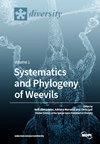Plumage Variation and Sex Ratio in the Brown-Backed Parrotlet (Touit melanonotus; Psittacidae)
IF 2.1
3区 生物学
Q2 BIODIVERSITY CONSERVATION
引用次数: 0
Abstract
The Brown-backed Parrotlet, Touit melanonotus, is a rare endemic bird to the Brazilian Atlantic Forest, currently considered as “Vulnerable” in the Brazilian Red List of Threatened Species. We estimated the sex ratio of a wild flock of T. melanonotus using molecular markers, examined morphological variation in 34 museum specimens to test for sexual dimorphism, and conducted a literature review about sex ratio in Psittacidae for comparative purposes. We found a sex ratio of 0.8:1 (male/female; n = 29) in T. melanonotus, and a χ2 Goodness-of-fit test showed no significant difference from equality (p > 0.05). We describe three main categories in plumage: the first (and most common) comprises uniformly lime green birds, slightly darker on the head. The second is composed of individuals who are overall lighter, with the breast feathers washed with light greenish gray, and feathers of the head being dark lime green, presenting a sharp contrast with the breast feathers. The third and the rarest one is composed of birds with light greenish gray underparts with emerald green and darker upper parts. T. melanonotus has no apparent sexual dimorphism. We found no evidence of geographic variation. Sex ratio deviation may not be a parameter increasing the vulnerability of the species. Data like these represent a big leap in the knowledge of the species and has the potential to help and inform conservation efforts.褐背鹦鹉羽毛变异及性别比例的研究鹦鹉科)
棕背鹦鹉(Touit melanonotus)是巴西大西洋森林的一种罕见的特有鸟类,目前被列为巴西濒危物种红色名录中的“易危”物种。本文利用分子标记法对野生黑尾金蝇种群的性别比进行了估算,对34个博物馆标本进行了形态变异分析,以检验其性别二态性,并对鹦鹉科的性别比进行了文献综述,以进行比较。我们发现性别比为0.8:1(男性/女性;n = 29),经χ2拟合优度检验,差异无统计学意义(p >0.05)。我们描述了羽毛的三大类:第一种(也是最常见的)包括均匀的石灰绿色鸟类,头部略深。第二幅是由整体颜色较浅的个体组成,胸部的羽毛是淡绿灰色的,头部的羽毛是深石灰绿色的,与胸部的羽毛形成了鲜明的对比。第三种也是最稀有的一种是由浅绿灰色的下体和翠绿色和深色上部组成的鸟类。T. melanonotus没有明显的两性二态性。我们没有发现地理差异的证据。性别比偏差可能不是增加物种脆弱性的一个参数。像这样的数据代表了对物种知识的巨大飞跃,并有可能帮助和告知保护工作。
本文章由计算机程序翻译,如有差异,请以英文原文为准。
求助全文
约1分钟内获得全文
求助全文
来源期刊

Diversity-Basel
Environmental Science-Ecological Modeling
CiteScore
3.40
自引率
12.50%
发文量
925
审稿时长
11 weeks
期刊介绍:
Diversity (ISSN 1424-2818) is an international and interdisciplinary journal of science concerning diversity concept and application, diversity assessment and diversity preservation. It is focused on organismic and molecular diversity. It publishes reviews, regular research papers and short notes in the regular issues. Related news and announcements are also published. Our aim is to encourage scientists to publish their experimental and theoretical results in as much detail as possible. Therefore, there is no restriction on the length of the papers. Full experimental details must be provided so that the results can be reproduced.
 求助内容:
求助内容: 应助结果提醒方式:
应助结果提醒方式:


